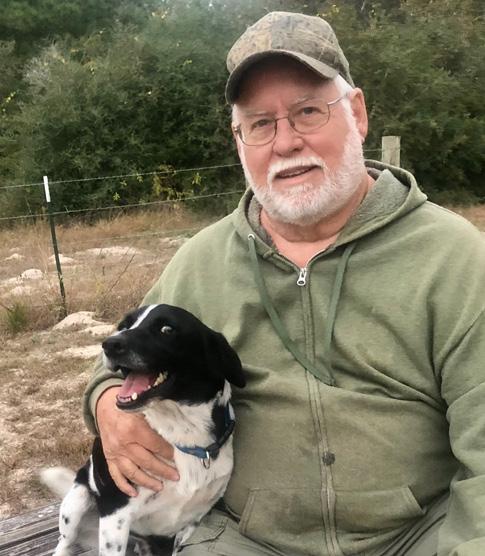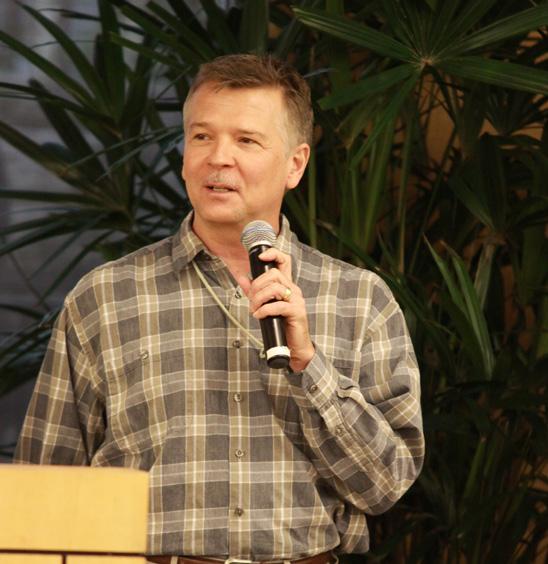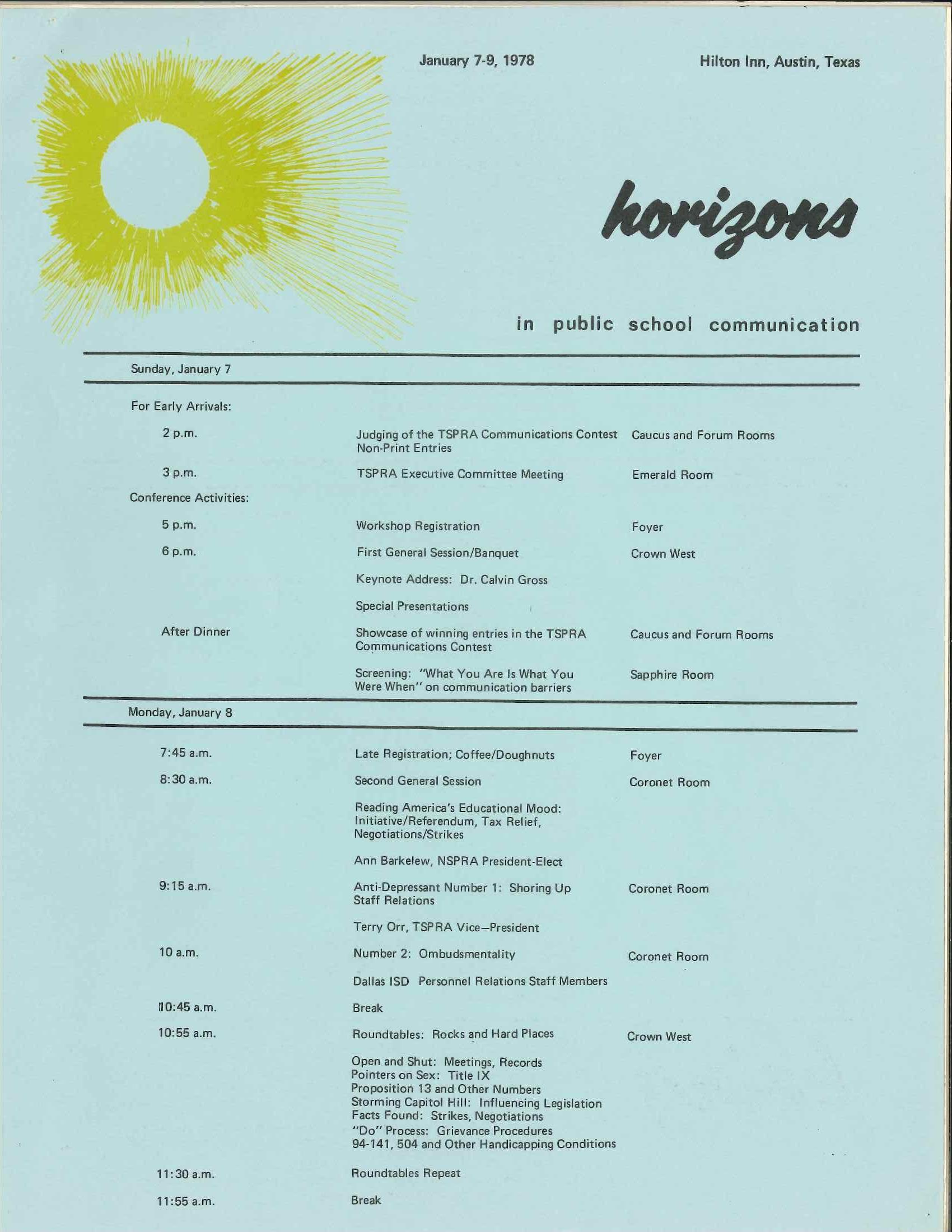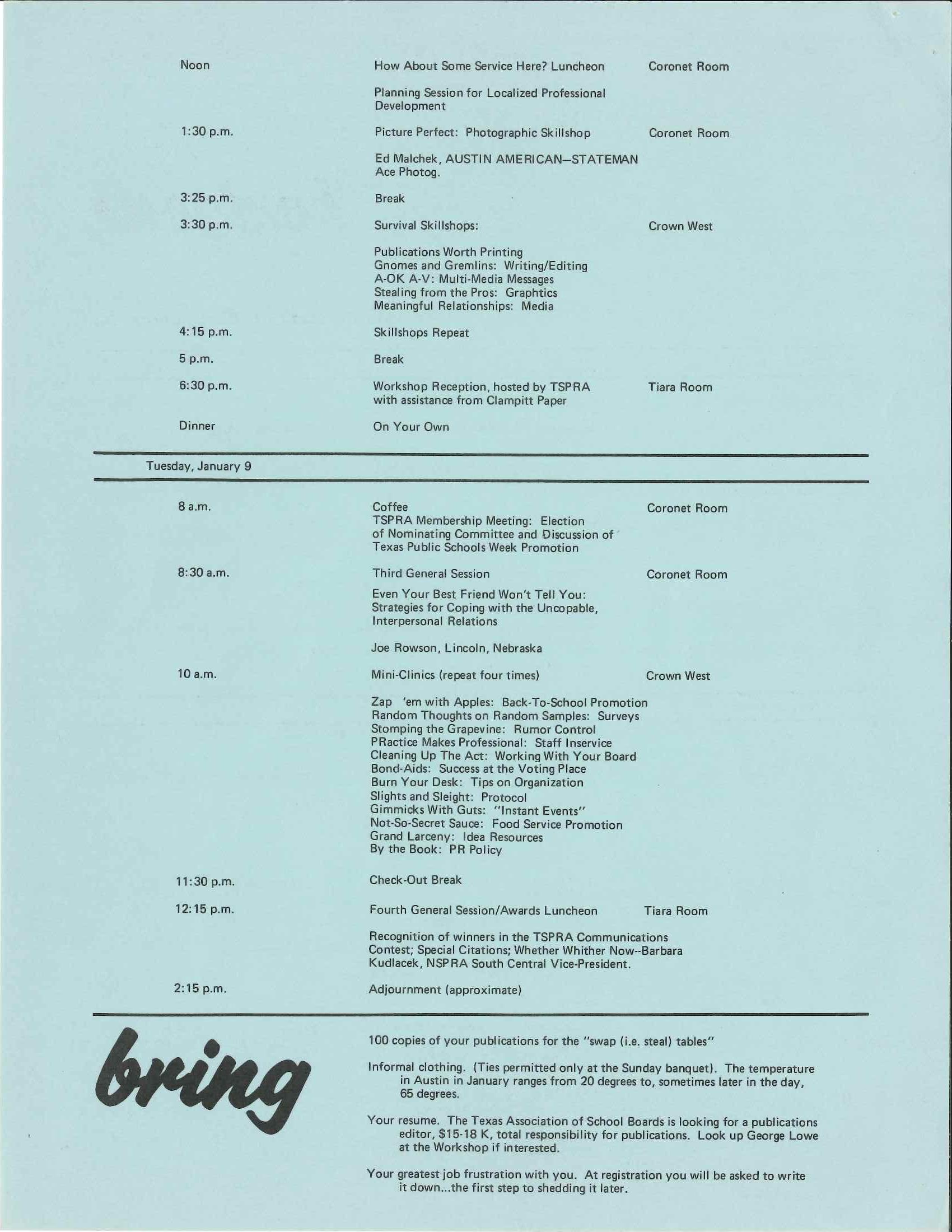
8 minute read
A Tale of Two Members Meet two of TSPRA’s
by Adam J. Holland Director, Communications and Community Relations La Porte ISD
In 1962, a gallon of gasoline was 27 cents — five cents cheaper than a dozen eggs — and one could mail a letter anywhere in the U.S. for less than a nickel. While the Cuban missile crisis wreaked havoc on everyone's nerves that year, Houston enjoyed a couple of distractions: the state’s first Major League Baseball team, the Colt .45s and the Houston Oilers' third straight AFL title game. Dallas motorists had a distraction of their own when the waterfall billboard was unveiled along Harry Hines
Advertisement
Boulevard. (It’s still there today!)
Meanwhile, the public education sector in 1962 became engulfed in a whirlwind of controversy, confusion and outrage when the U.S. Supreme Court ruled that statesponsored prayer in public schools was unconstitutional. Coincidentally, the Texas School Public Relations Association was also founded that year and has served as a valuable resource for school PR practitioners ever since.
Steve Knagg, who is currently TSPRA’s longest-serving member, and Roger White, who recently retired after 33 years as the managing editor at Texas Lone Star magazine (and the second longest-serving member), graciously agreed to answer a few questions as we celebrate 60 years as an organization.


You are currently the longest-serving TSPRA member. Describe the organization you joined vs. what it looks like today.
TSPRA became a part of my life in 1977 after I graduated from the UT School of Journalism and conned the Garland ISD into giving me a job. My first TSPRA seminar was in 1978 at the Lakeway Inn outside of Austin. There were 34 of us in attendance. Our seminar is a bit larger now!
What has been the biggest change that you have witnessed in TSPRA and school PR in general?
The people there kept talking about public relations, a term I did not know. Someone finally took pity on me and said, “Uh, dude, that’s what you are doing for a living.”
That was some good information for a rookie. In 1991, I was elected president of the National School Public Relations Association with a much clearer idea of what our group is all about.
I quickly learned that TSPRA’s greatest benefit was that it allowed me to build relationships with other PR pros across our state and nation. I’ve made lifelong friends who are always willing to lend an ear or a hand. TSPRA introduced me to a world of wonderful people who understood what I did for a living! The biggest change that I’ve seen in our profession is the speed at which things happen — the internet, the 24-hour news cycle and the fact that everyone with a cell phone is now a news reporter. (Leave your phone home tomorrow and see how the day goes!) In the 70s, we wrote news releases on IBM Selectric typewriters and then snail-mailed them to reporters.
Looking at your crystal ball, where do you think school PR will look like in, say 10 years?
When I look to the future of school PR, I’m concerned about the push by some of our patrons to turn school boardrooms into battlegrounds. The loudest voices often win. As school communicators, our job of helping leaders to lead is becoming more difficult. The fact that we have one of the most important jobs in our country can’t be taken for granted.
TSPRA’s greatest benefit is the ongoing training, education and inspiration afforded each of us, the frontline workers in our great profession. Is it working? When an association seminar grows from 34 to 934 you know that TSPRA is doing an outstanding job.
What advice would you offer newcomers to the school PR trade? What advice would I give to today’s PR pros?
That’s easy. It’s the same message I’ve been sharing for decades:
• Go home! You’ll never be “caught up” so let that one go! • Take care of the caregiver. That’s you! There are days when you really need to take care of yourself. My advice is to “call in well!” • And finally, I believe that the job you’re doing each day has eternal value. I worked in GISD communications for 30 years and then served a term there on the school board. Was it worth it? Without a doubt.
Relax! You have the greatest job on earth.
continued on Page 34


Do you remember first joining TSPRA? What position did you hold then?
I joined TSPRA in 1987 when I was hired as a communications specialist at Arlington ISD. My boss at AISD was Rosemary Travis, who was a wonderful boss and dedicated TSPRAn. She introduced me to the world of TSPRA, and I remain thankful for it.
You could say it was through TSPRA that I found my career job as editor of TASB's “Texas Lone Star” magazine. In 1988, Rosemary volunteered our staff at Arlington ISD to edit the daily newsletter that TSPRA used to publish during the annual TASA/TASB Convention. TASB was looking for an assistant editor for their magazine and had the position posted on the wall of our makeshift office at the convention. I applied for the job and started at TASB in 1989.
Besides that, however, TSPRA has always been a great resource for me. TSPRA professionals from districts all over the state have contributed countless stories and story ideas to “Texas Lone Star,” and I relied on so many talented district communicators to help tell the story of public education through the years. If some of today's TSPRAns are "seasoned" enough, they'll remember names of some great TSPRA pros through the years, such as Riney Jordan, Steve Knagg, Terry Cannon. They each helped me along the way.
Your work as managing editor of “Texas Lone Star” has kept you at the center of all things public education. What are some of the major changes or shifts that you have witnessed over the years?
Technology comes to mind first. In the last three decades alone, educators have had to stay on top of such monumental changes in the way students are taught. I have great respect for classroom teachers and the vital job they have before them. Public opinion, from state lawmakers on down, has ebbed and flowed through the years regarding public education, as well. That's why I firmly believe in TSPRA and NSPRA because community members sometimes aren't getting the true picture of how dedicated school district professionals are. If not for organizations such as TSPRA, the thousands of success stories happening every day in classrooms and districts all over Texas would not be known.
How did (those) changes affect your work? Or did they?
My job specifically, and I'm sure every communications person's job, evolved mainly in how we communicate over the years. Technology dramatically altered the logistics of communication — but not the stories themselves. For example, when I started at TASB in 1989, we were still doing physical paste-up of the magazine, using rollers and glue and using proportion scales to size photos, etc. All that has changed, of course. As the internet and social media came onto the scene, the function of a monthly magazine shifted somewhat, too. We moved to more timeless features and long-form stories for the magazine and left the daily news to our online presence. But the primary job, telling the stories of public education successes, challenges and trends, did not change.
Back to TSPRA... From your perspective, how has the organization evolved over the years?
I'm not sure I can speak to how TSPRA has evolved specifically over the years, but I can say, from my perspective, TSPRA never skipped a beat. Their job is as vital today — perhaps even more so today because of our divided political climate — as it has ever been. Telling public education's story is crucial to the survival of public schools.
I believe that today a successful school PR person — any PR person — must be a self-starter and a generalist, not a specialist. My title at Arlington ISD way back when was "communications specialist," but I believe today that word doesn't apply. PR folks must know a little about every aspect of the job from the rapidly evolving technical areas and dealing with not-so-friendly community members to staying on top of legislative and legal rulings to writing a good, effective story. It's a tough job, but it is so rewarding when you get feedback from a story you wrote — someone asking for more information about a successful program or simply saying "thank you" for telling their story.
Finally, congratulations on your retirement. Anything else you want to add?
This (2021) was my 33rd year at TASB. It's been a long ride, and I've come to greatly appreciate the people who put themselves out there every day for the bottom line — and that are ensuring our kids have the best education we can give them.
My, how things have changed!
See page 36-37 for a conference program from 1978.












